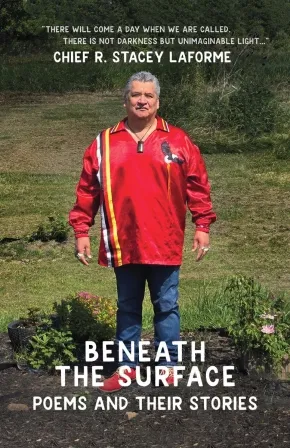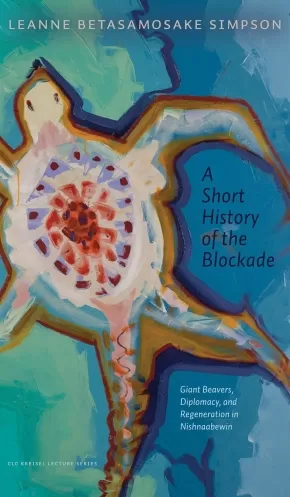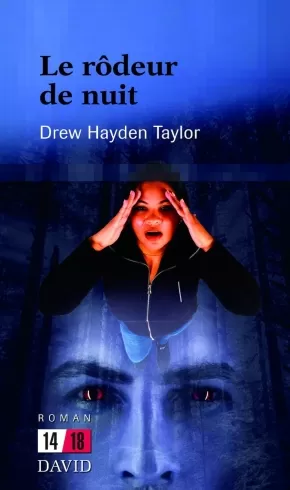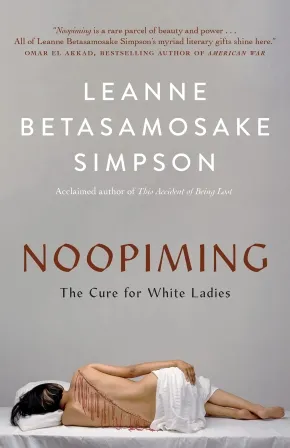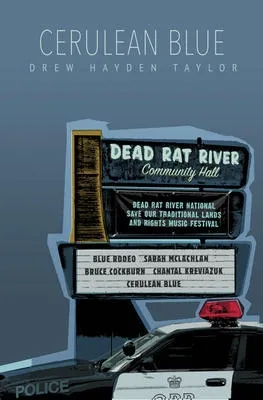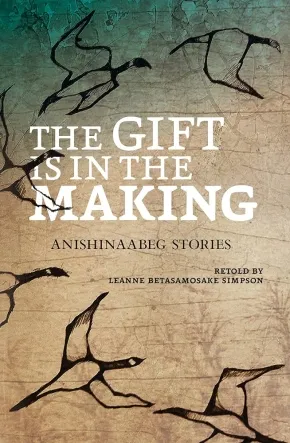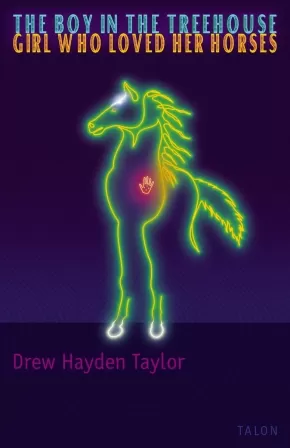Mississauga
Synopsis:
Chief Stacey Laforme, an esteemed Indigenous leader and storyteller, breathes life into every poem and story, drawing upon his deep cultural roots. Rich with the essence of his soul, the poems in Beneath the Surface capture the moments and emotions that have shaped him, offering a poignant exploration of identity, resilience, and hope. Through humour and pain, Laforme invites readers to not just read, but to truly feel the weight and wisdom carried within each verse.
This collection goes beyond poetry, providing rich backstories and leadership insights that contextualize the verses. As in his earlier collections, Living in the Tall Grass and Love, Life, Loss and a little bit of hope, Laforme once again extends an invitation to readers, encouraging them to see the world through Indigenous eyes. Themes of peace, humanity, grief, and trauma are woven throughout the book, creating a tapestry of reflection, healing, and ultimately, hope.
Beneath the Surface serves as both a deeply personal reflection and a call for greater understanding and connection, illuminating the complexities of life through the lens of Indigenous wisdom and storytelling.
At the end of this book, this journey, Laforme seeks to help you better answer the following questions. Who was I, Who am I, and Who do I want to be? As a person, a people, a country, a world, who do we want to be?
Additional Information
192 pages | 8.50" x 5.50" | Paperback
Synopsis:
A tragic plane crash that leaves two women stranded and fighting for their lives kicks off this sweeping and hilarious novel from award-winning writer Drew Hayden Taylor that blends thriller, murder mystery, and horror with humour and spectacle.
Elmore Trent is a professor of Indigenous studies who finds himself entangled in an affair that's ruining his marriage; Paul North plays in the IHL (Indigenous Hockey League), struggling to keep up with the game that's passing him by; Detective Ruby Birch is chasing a string of gruesome murders, with clues that conspicuously lead her to both Elmore and Paul. And then there's Fabiola Halan, former journalist-turned-author and famed survivor of a plane crash that sparked a nationwide tour promoting her book.
What starts off as a series of subtle connections between isolated characters quickly takes a menacing turn, as it becomes increasingly clear that someone—or something—is hunting them all.
Taking tropes from the murder mystery, police procedural, thriller, and horror genres, Drew Hayden Taylor weaves a pulse-pounding and propulsive narrative with an intricate cast of characters, while never losing the ability to make you laugh.
Reviews
"Cold is an absolutely enthralling novel from a legendary writer and storyteller. Drew Hayden Taylor is a master of genuinely capturing contemporary Indigenous realities in fiction, making the vibrant characters in this exceptional story relatable and real. Cold is creepy and funny, smart and lively, and overall a strikingly dynamic book that will keep readers on edge from start to finish."—Waubgeshig Rice, author of Moon of the Crusted Snow and Moon of the Turning Leaves
"The myth of the Wendigo has shaped narratives from Pet Semetary to Shadow Country to The Hunger—but never in my reading has it been so cleverly and relevantly employed as it is in Drew Hayden Taylor's serpentine and haunting new novel, Cold." —Nick Cutter, author of The Troop and Little Heaven
Additional Information
368 pages | 5.50" x 8.25" | Paperback
Synopsis:
“We should not have to change to fit into society the world should adapt to embrace our uniqueness.” -- Chief Stacey Laforme
Chief Stacey Laforme breathes life into every poem and story he shares, drawing from his own experiences. Rich with the essence of his soul, the poems in this book capture the moments and emotions that have shaped him. His desire is for readers to not just read, but to truly feel the humour and pain intertwined in these poems. Much like in Living in the Tall Grass, this latest poetry collection invites non-Indigenous people to see through the eyes of Indigenous people with topics of peace and humanity, as well as grief, trauma ... and hope.
Reviews
"Thought provoking, healing meditations. Giima Laforme writes from his perspective as a son, father, husband, community leader, but most of all as a human being. He invites us to walk with him, and to see the world as he sees it. Not only is this an invitation we should accept, but it is also a beautiful and generous gift." — Kevin Hearn, musician
"Chief Stacey Laforme writes with the motive of love, and poetry is his instrument. When considering the unmarked graves at residential schools, Chief Laforme’s poem ‘Debwewin—Truth’ freezes you with the line, “She felt the shovels enter her body.” But as you will see, there is always hope. Chief has both the scalpel and the suture. He cuts, then he cures." —Ron MacLean, broadcaster
Additional Information
160 pages | 8.50" x 5.50" | Paperback | 3 b&w illustrations
Synopsis:
In A Short History of the Blockade, award-winning writer Leanne Betasamosake Simpson uses Michi Saagiig Nishnaabeg stories, storytelling aesthetics, and practices to explore the generative nature of Indigenous blockades through our relative, the beaver—or in Nishnaabemowin, Amik. Moving through genres, shifting through time, amikwag stories become a lens for the life-giving possibilities of dams and the world-building possibilities of blockades, deepening our understanding of Indigenous resistance, as both a negation and an affirmation. Widely recognized as one of the most compelling Indigenous voices of her generation, Simpson’s work breaks open the intersections between politics, story, and song, bringing audiences into a rich and layered world of sound, light, and sovereign creativity. A Short History of the Blockade reveals how the practice of telling stories is also a culture of listening, “a thinking through together,” and ultimately, like the dam or the blockade, an affirmation of life.
Educator Information
Subjects & Keywords: Social Sciences, Literary Criticism, Indigenous Studies; Indigenous resistance, blockades, beaver dams, Nishnaabeg storytelling, regeneration, generative resistance, Canadian Indigenous literature, land defenders, water defenders, practice of wisdom, Indigenous stories, Indigenous authors.
Recommended in the Canadian Indigenous Books for Schools collection for grades 10 to 12 for these subjects: Social Studies, English Language Arts, English First Peoples
Additional Information
88 pages | 5.25" x 9.00"
Synopsis:
Affectée par le départ de sa mère, Tiffany, une jeune Anishinaabe, cherche à prendre en main son existence, entre son père et sa Mamie Ruth, sur la réserve de Lac-aux-Loutres, dans le centre de l’Ontario.Alors qu’elle compose déjà difficilement avec l’autorité de son père, les exigences de l’école et le début d’une relation amoureuse avec un garçon non autochtone, Tiffany voit sa vie bousculée par un mystérieux personnage, Pierre L’Errant, que son père a décidé de prendre comme chambreur.Celui-ci, qui dit débarquer d’Europe, fait une drôle d’apparition dans ce village où jamais un touriste ne met les pieds. Mamie Ruth, qui en a vu d’autres, n’est cependant pas dupe de ses histoires et devine qu’il camoufle d’épouvantables démons intérieurs.Auteur de nombreux romans et de pièces de théâtre, Drew Hayden Taylor, lui-même Anishinaabe, a voulu écrire un « roman gothique autochtone » où il aborde les défis de l’adolescence, la transmission de la culture et, surtout, la nécessité de ne jamais abandonner.
Educator Information
This book is available in English: The Night Wanderer: A Native Gothic Novel
Additional Information
330 pages | 4.72" x 7.48"
Synopsis:
Award-winning Nishnaabeg storyteller and writer Leanne Betasamosake Simpson returns with a bold reimagination of the novel, one that combines narrative and poetic fragments through a careful and fierce reclamation of Anishinaabe aesthetics.
Mashkawaji (they/them) lies frozen in the ice, remembering a long-ago time of hopeless connection and now finding freedom and solace in isolated suspension. They introduce us to the seven main characters: Akiwenzii, the old man who represents the narrator’s will; Ninaatig, the maple tree who represents their lungs; Mindimooyenh, the old woman who represents their conscience; Sabe, the giant who represents their marrow; Adik, the caribou who represents their nervous system; Asin, the human who represents their eyes and ears; and Lucy, the human who represents their brain. Each attempts to commune with the unnatural urban-settler world, a world of SpongeBob Band-Aids, Ziploc baggies, Fjällräven Kånken backpacks, and coffee mugs emblazoned with institutional logos. And each searches out the natural world, only to discover those pockets that still exist are owned, contained, counted, and consumed. Cut off from nature, the characters are cut off from their natural selves.
Noopiming is Anishinaabemowin for “in the bush,” and the title is a response to English Canadian settler and author Susanna Moodie’s 1852 memoir Roughing It in the Bush. To read Simpson’s work is an act of decolonization, degentrification, and willful resistance to the perpetuation and dissemination of centuries-old colonial myth-making. It is a lived experience. It is a breaking open of the self to a world alive with people, animals, ancestors, and spirits, who are all busy with the daily labours of healing — healing not only themselves, but their individual pieces of the network, of the web that connects them all together. Enter and be changed.
Reviews
"Noopiming is a rare parcel of beauty and power, at once a creator and destroyer of forms. All of Leanne Betasamosake Simpson’s myriad literary gifts shine here — her scalpel-sharp humour, her eye for the smallest human details, the prodigious scope of her imaginative and poetic generosity. The result is a book at once fierce, uproarious, heartbreaking, and, throughout and above all else, rooted in love.” — Omar El Akkad, bestselling author of American War
"Noopiming is a novel that is as philosophically generative as it is stylistically original. It begins with someone who is frozen in a lake, waiting, and from whom we learn that: ‘being frozen in the lake is another kind of life.’ Leanne Betasamosake Simpson’s expansive work explores the indivisibility of beings — old woman, old man, tree, caribou, stone, ice, spirit, geese, the brain, and more, all watching, grieving, thinking, acting, and listening amidst the ongoing and quotidian urgencies of capital. They are sleepless, ceaseless, trying to alter and to recode the world of consumerism, and their survival means that they must daily and collectively reconstruct existence in the city and its coterminous forests. Noopiming is far ahead of us in so many registers of story, language, and worldview; its cumulative effect is a new cosmography.” — Dionne Brand, award-winning author of Theory
"This imaginative book is what would happen if we gave pen and paper to the deepest, most secretive parts of ourselves. Down to the fibres, down to each breath, Leanne Betasamosake Simpson dares to not only explore the humanity of a character, but the humanity of the parts that make us whole, in a world running on empty.” — Catherine Hernandez, bestselling author of Scarborough
"Leanne Betasamosake Simpson’s Noopiming once again confirms her position as a brilliant, daring experimentalist and a beautiful, radical portraitist of contemporary NDN life. The prose hums with a lovingness that moved me to tears and with a humour that felt plucked right out of my rez adolescence. The chorus of thinkers, dreamers, revolutionaries, poets, and misfits that Simpson conjures here feels like a miracle. My heart ached and swelled for all of them. What I adored most about this book is that it has so little to do with the white gaze. Simpson writes for us, for NDNs, those made to make other kinds of beauty, to build other kinds of beautiful lives, where no one is looking. Noopiming is a book from the future! Simpson is our much-needed historian of the future!” — Billy-Ray Belcourt, award-winning author of This Wound is a World and NDN Coping Mechanisms
"How is it that Leanne Betasamosake Simpson’s fiction can feel both familiar and warm like old teachings and absolutely fresh and brand new? Is it even fiction? Noopiming seems to exist somewhere in the in-between, with all the best parts of poetry and story. As always, I am in awe of Leanne Betasamosake Simpson, prolific in every way.” — Katherena Vermette, bestselling author of The Break
Additional Information
368 pages | 5.50" x 8.50"
Synopsis:
In this deeply engaging oral history, Doug Williams, Anishinaabe elder, teacher and mentor to Leanne Betasamosake Simpson, recounts the history of the Michi Saagiig Nisnaabeg, tracing through personal and historical events, and presenting what manifests as a crucial historical document that confronts entrenched institutional narratives of the history of the region. Edited collaboratively with Simpson, the book uniquely retells pivotal historical events that have been conventionally unchallenged in dominant historical narratives, while presenting a fascinating personal perspective in the singular voice of Williams, whose rare body of knowledge spans back to the 1700s. With this wealth of knowledge, wit and storytelling prowess, Williams recounts key moments of his personal history, connecting them to the larger history of the Anishinaabeg and other Indigenous communities.
Reviews
"This book gives us an alternative perspective on historical record that is both personal and collective. Doug Williams reminds us of the generations of Indigenous knowledge keepers and of a history that stretches back prior to European contact-including the disruption of contact. This book is his gift to the Michi Saagiig and to all Anishinaabek. It is also a gift to Canadians who want to help decolonize this country. - Armand Garnet Ruffo
"Storytelling is not just a gift. It's not just an art. It's also a responsibility: the weaving together of history, philosophy, culture and humour frequently highlighting a culture's perspective on the world. Doug Williams has been doing this as long as I can remember. He lives the culture, not just talks about it. The people and places he talks about in Michi Saagiig Nishnaabeg are more a part of our history then all the things going on in Ottawa." - Drew Hayden Taylor
Educator Information
Recommended in the Canadian Indigenous Books for Schools 2019-2020 resource list as being useful for grades 9 to 12 for Creative Writing, English Language Arts, Media Studies, and Social Studies.
Additional Information
168 pages | 5.50" x 8.50"
Synopsis:
This Accident of Being Lost is the knife-sharp new collection of stories and songs from award-winning Nishnaabeg storyteller and writer Leanne Betasamosake Simpson. These visionary pieces build upon Simpson's powerful use of the fragment as a tool for intervention in her critically acclaimed collection Islands of Decolonial Love. Provocateur and poet, she continually rebirths a decolonized reality, one that circles in and out of time and resists dominant narratives or comfortable categorization. A crow watches over a deer addicted to road salt; Lake Ontario floods Toronto to remake the world while texting "ARE THEY GETTING IT?"; lovers visit the last remaining corner of the boreal forest; three comrades guerrilla-tap maples in an upper middle-class neighbourhood; and Kwe gets her firearms license in rural Ontario. Blending elements of Nishnaabeg storytelling, science fiction, contemporary realism, and the lyric voice, This Accident of Being Lost burns with a quiet intensity, like a campfire in your backyard, challenging you to reconsider the world you thought you knew.
Educator Information
Recommended for ages 16 and up.
Curriculum Connections: English, Indigenous Studies, History, Humanities and Social Sciences.
Synopsis:
Cerulean Blue is a comedic play about a struggling blues band invited to participate in a benefit concert for a First Nation community in conflict with governmental authorities. Upon arriving, the band discovers the entire lineup of musical acts has cancelled and they’re left trapped behind barricades. Complicating the matter, there is conflict within the band and the sudden appearance of an old girlfriend makes the event even more perilous.
This play is an homage to fast-moving farces while also addressing Aboriginal issues. Cerulean Blue deals with relationships, perceptions, politics, and what to do when you discover you’ve been dating your first cousin. Add a few spoonfuls of original blues music, and you’ve got a fun-filled evening.
The play was written for a large ensemble cast, which makes it ideal for musical theatre departments in high schools and colleges – every student can play apart.
Cast of ten women and ten men.
Additional Information
144 pages | 7.88" x 8.47" | Paperback
Synopsis:
The Gift Is in the Making retells previously published Anishinaabeg stories, bringing to life Anishinaabeg values and teachings to a new generation. Readers are immersed in a world where all genders are respected, the tiniest being has influence in the world, and unconditional love binds families and communities to each other and to their homeland. Sprinkled with gentle humour and the Anishinaabe language, this collection of stories speaks to children and adults alike, and reminds us of the timelessness of stories that touch the heart.
Educator & Series Information
This book is part of The Debwe Series.
Recommended for grades 5 to 9.
Additional Information
99 pages | 5.50" x 8.50"
Synopsis:
A mesmerizing blend of vampire thriller and coming-of-age story -- now available as a graphic novel.
Newcomers to the Otter Lake native reserve don't go unnoticed for long. So it's no surprise that 16-year-old Tiffany's curiosity is piqued when her father rents out her room to a complete stranger.
But little do Tiffany, her father, or even her insightful Granny Ruth suspect the truth about their guest. The mysterious Pierre L'Errant has a dreadful secret. After centuries roaming Europe as a brooding vampire, he has returned home to reclaim his Native roots before facing the rising sun and certain death. Meanwhile, Tiffany is deeply troubled -- she doubts her boyfriend is being faithful, has escalating disputes with her father, and her estranged mother is starting a new life with somebody else.
Fed up and heartsick, Tiffany threatens drastic measures and flees into the bush. There, in the midnight woods, a chilling encounter with L'Errant changes everything as Pierre introduces Tiffany to her proud Native heritage. For Pierre, though, destiny is fixed at sunrise.
In this stunning graphic version of the award-winning novel, artist Mike Wyatt brings a brilliant story to visual life.
Educator Information
Recommended Grades: 8-12
Additional Information
112 pages | 6.00" x 9.00"
Synopsis:
In this collection of two plays about the process of children becoming adults, Drew Hayden Taylor works his delightfully comic and bitter-sweet magic on the denials, misunderstandings and preconceptions which persist between Native and Colonial culture in North America.
In “The Boy in the Treehouse,” Simon, the son of an Ojibway mother and a British father, climbs into his half-finished tree house on the vision-quest his books say is necessary forhim to reclaim his mother’s culture. “It’s a Native thing,” he informs his incredulous father (who tells him he’d never heard of such a thing from his wife): “Only boys do it. It’s part of becoming a man.” Of course, what with the threats of the police, the temptation of the barbeque next door, and the distractions of a persistent neighbourhood girl, Simon probably wouldn’t recognize a vision if he fell overit.
“Girl Who Loved Her Horses” is the Native name for the strange and quiet Danielle from the non-status community across the tracks, imbued with the mysterious power to draw the horse “every human being on the planet wanted but could never have.” She is and remains an enigma to the people of the reservation, but the power of her spirit remains strong. Years later, a huge image of her horse reappears, covering an entire side of a building in a blighted urban landscape of beggars and broken dreams. The eyes of her stallion, which once gleamed exhilaration and freedom, now glare with defiance and anger. Danielle has clearly been forced to grow up.
With these two plays, Taylor rediscovers an issue long forgotten in our “post-historical” age: the nature of, and the necessity for, these rites of passage in all cultures.
Additional Information
160 pages | 5.50" x 8.50" | Paperback

